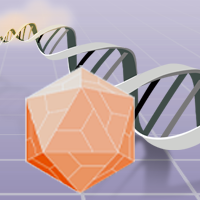Fine tuning AAV: machine learning the capsid
Cell & Gene Therapy Insights 2023; 9(4), 785–798
10.18609/cgti.2023.099
Viruses have evolved mechanisms to enter cells, deliver their nucleic acid to the correct compartment, express genes, make copies of the delivery system and genome, and exit the cell to continue the cycle. Adeno-associated virus (AAV), a dependoparvovirus, lost the ability to complete its life cycle without functions carried by a helper virus, a desirable quality for a gene therapy vector. AAV serotypes have achieved commercial success as a gene medicine treating RPE65 mutation-associated retinal dystrophy (Luxturna®, AAV2 subretinal injection), spinal muscular atrophy (Zolgensma®, AAV9 intravenous injection [IV]), AADC deficiency (AAV2, putamen injection 2.8e11 vg/putamen), hemophilia B (Roctavian®/Hemgenix®, AAV5 IV), Duchenne muscular dystrophy (Elevidys, AAVrh74 IV). However, the natural serotypes may have limitations depending on the therapeutic application in transduction efficiency, tropism, neutralizing antibody resistance, and blood brain barrier crossing among other shortcomings. To address these limitations artificial capsids are being developed using synthetic biology to deliver the gene therapy. This review will focus on machine learning (ML) as the guiding design principle to improve AAV capsids.
